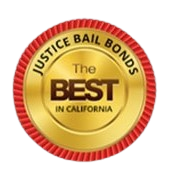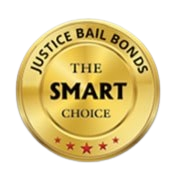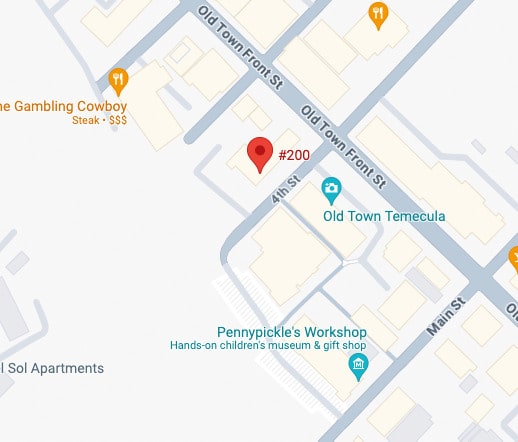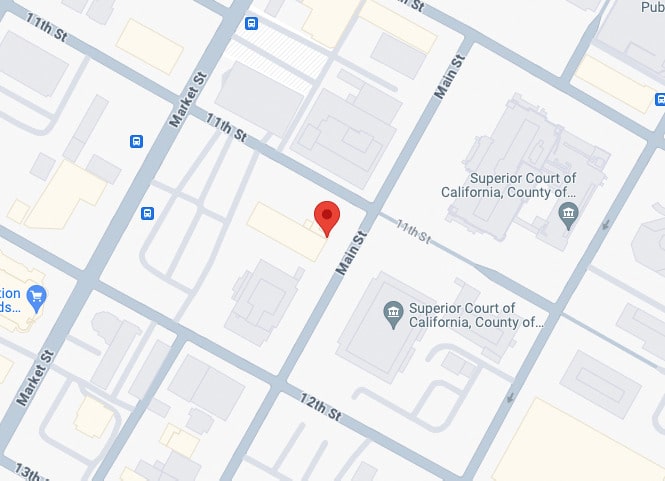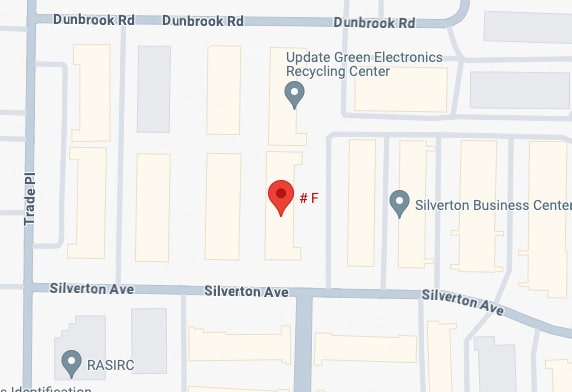In California, a new bail reform bill (Senate Bill 10 or The California Bail Reform Act) has been established, setting into motion changes that threaten to put the entire bail bondsman industry out of business.
Originally slated to go into effect on October 1, 2019, California was to become the very first state to eliminate bail for those accused of a crime awaiting trial and replace it with a risk-assessment system that each jurisdiction would be responsible for creating and implementing.
However, Californians Against the Reckless Bail Scheme have begun a petition that has since halted the reform bill, instead of placing it on the 2020 ballot, allowing California voters the right to decide whether or not the bill eventually comes to fruition. Unfortunately, though, some of the bill's policies have already been incorporated into the court system ahead of schedule.
While the new bill holds a myriad of controversy across the board, regardless of where personal opinion falls, it is necessary—not to mention, interesting and important—to look at the facts of this new bill and consider what it could mean for the bail bondsman industry in California. Further, it is also cautionary to see how this bill could impact California citizens, and whether or not other states will follow through with this reform example.
To understand where the bail bondsman industry is going, it is imperative to learn its history, to answer this impending question: Is the elimination of bail in California in everyone's best interest?
The Bail Reform Act—An Overview of Then and Now
To better understand where bail reform could be headed (specifically, in California), it is important to learn about its origins.
Dating back to when colonies were more prominent or thought of regularly, men and women who were eligible for pretrial release turned to family and/or friends who would agree to pay a monetary settlement if the said person failed to appear at court.
Then, in the 1800s, when it was a common struggle for people to secure these agreements, courts established money bail: a financial incentive for someone accused of a crime (not yet convicted) to return to court at a later date.
Today, the idea of money bail is still used in courts across the country, and in various forms. For example, there is “surety bail bond,” in which a person pays a fee or percentage of the bail amount to a commercial bail agent. In return, the agent agrees to pay the full bail amount if the person does not appear at the later court date. This fee/percentage is not returned, and more often than not, the agent requires collateral to cover the full bail amount.
There is also “cash bail” in existence, which is money paid to the court but returned after the accused appears for his or her court hearing. A court fee is generally subtracted from this returned amount.
It was not long before problems with the bail system started to rise. Mainly, reformers suggested that bail agents abused their power and judges set bail so unreasonably high that many could not afford it. The Pretrial Justice Institute shows that these issues continued through the 1920s, and by the 1960s, studies showed that assigning bail was unnecessary, as the majority of people accused of a crime would return to court—without incident—despite not having paid bail.
Congress passed the Bail Reform Act in 1966, establishing that a person should be released on his or her own recognizance, or under the “least restrictive conditions” to help ensure appearances at court hearings. Many states then passed their own rules and regulations regarding bail. However, money bail was still sometimes ordered by a judge.
The 1970s and 1980s saw a fear of rising crime, which led to the Bail Reform Act of 1984: All judges in a federal court case could detain someone who was deemed either a flight risk or believed to be a serious threat to public safety. Again, many states then followed with their own statutes regarding this act.
Today, judges are still known to set unaffordable bail. Specifically, according to the Bureau of Justice Statistics, between 1990 and 2009, examples in which money bail was used in felony cases rose from 37 percent to 61 percent.
Change in California: The New Bail Reform Bill
It was in late August 2018 when Governor Jerry Brown signed the new reform bill, making California the very first state in the nation to abolish the option of bail for those accused of a crime awaiting trial. Yet, even before the creation of the bill, the state's bail system had been an ongoing issue for lawmakers for years. This issue finally came to a head when a California appellate court declared the state's bail system was unconstitutional.
The main argument, simplified, boils down to bias: Does the current law favor the wealthy, those who can easily afford bail, while penalizing the poor, forcing them to stay in custody?
After signing the California Money Bail Reform Act, Governor Brown stated, “Today, California reforms its bail system so that rich and poor alike are treated fairly.”
Co-author of the bill, Senator Robert Herzberg, added, “Our path to a more just criminal justice system is not complete, but today it made a transformational shift away from valuing private wealth and toward protecting public safety. California will continue to lead the way toward a safer and more equitable system.”
So, what could this new bill mean for those accused of a crime and awaiting trial?
Under the new bail reform bill in California, anyone arrested and charged with a crime will not be permitted to put up their own money or borrow money from a bail bondsman to get out of jail while awaiting trial. Local courts will now decide whom to keep in custody and whom to release, with the decision being based on an algorithm created by the courts in each individual jurisdiction.
Breaking the law down further, the following will ensure: In nonviolent, misdemeanor cases, the accused will be released within 12 hours. In other cases, however, the accused will be scored on a combination of factors, such as being a flight risk and the nature of the crime. Other release conditions could include regular officer check-ins or GPS monitoring.
The ultimate goal of the legislation may be to end human bias in court proceedings, but there are still doubts as to whether or not this will happen—in particular, by the American Civil Liberties Union of California (ACLU), who co-sponsored the bill at one time. The group has since pulled their support, believing that judges have too much power in determining the circumstances in which those accused will be kept in custody or released.
What the New Bill Means for the Bail Bondsman industry in CA
Regardless of why the bill has been created or, if put into effect, will officially end biases in the courtroom or create new ones, there is also the issue of the bail bondsman industry in California: If bond is no longer an option in the state, what does that mean for the thousands of men and even more women currently working in the profession?
The day the bill was signed, President of the Golden State Bail Agents Association, Topo Padilla, told NPR, “We're gone. We're done. As of today, the bail industry will start shutting their doors.” Further, it was reported by the Wall Street Journal 7,000 jobs could be affected by this new law.
Greg Padilla, a bail bondsman out of Sacrament, said that with this new law, his business will be destroyed. "As far as what I'm going to do, I have no idea."
That does not seem to be the focus or even a concern of those behind the law: The new risk-assessment system that each jurisdiction throughout the state is responsible for creating and implementing, will essentially demolish the bail bondsman industry in California—an industry that has been around since the 1800s and, as shown by history, benefits many.
In layman's terms, a reputable bail bondsman can assist someone who has no other way to pay their bail. Further, though, some even argue that this industry is a necessity for the American Justice System to function adequately. It can also be argued that bail bondsmen benefit just about everyone, including taxpayers.
To expand on this fact, when a person accused of a crime is awaiting trial and released on bail (via a bail bondsman), taxpayers are no longer paying for housing or food for this individual. Also, a bail bondsman is required to pay insurance premiums on every bail bond written, which in turn, reduces the need to pay law enforcement officers to track down those who do not return for a court appearance.
Yet, statistics show (varying from state-to-state) that those who hire a bail bondsman to post their bail are 20 percent more likely to appear for their court date versus those released on their own recognizance. The system becomes even more successful when a loved one works with the bail bondsman to post bail, as the accused is likely to be more aware of the consequences and financial burden of not appearing for a court date when a family member or friend could be penalized.
Even though there are obvious pros to the bail bondsman industry, not to mention, the 8th Amendment allows for the issuing of bail based on “sufficient surety” (meaning bail should not be set at an excessive amount), the new bail reform bill was still supposed to go into effect on October 1, 2019.
For many, that would have meant losing high incomes (some in the six-figure range) and without having a degree or secondary education to fall back on to assist them in finding new work. There are training and tailored programs required to succeed in the bail bondsman industry, but without an industry, this training and programs become moot.
According to Padilla, bail bondsmen are not the only ones who could suffer from this new bill if put into law. He stated, “This law is bad for the people of California. It straps the taxpayers with funding 100 percent of all pretrial release programs and will lead to increasing detentions of people who otherwise would post bail.”
Here is a list of “low level” crimes that could allow offenders to get out of jail on their own recognizance (i.e. without bail) under the new risk-assessment program:
- Machine Gun Conversion
- Possession of a Silencer
- Transportation of Assault Weapon
- Kidnapping
- Stalking
- Lewd Act Upon a Child
- Human Trafficking
Is it in the public's best interest for those accused of committing these crimes to be released without bail or any monetary incentive—either their own or that of a family member's—while awaiting trial? What would force them to return to court once a trial date has been given?
The Current (and Future) State of the Bail Bondman Industry
Though the new bail reform bill was not supposed to go into effect until October 1, 2019, the California Supreme Court has already begun implementing some of its policies. According to the American Bail Coalition, the California Supreme Court is using $68 million of taxpayers money to implement the new bill, which was not supposed to go into effect until October.
As such, Californians Against the Reckless Bail Scheme have petitioned the legislation. Specifically, the group is fighting two main points: 1.) The new act would result in the release of violent offenders to the streets and 2.) It would kill a two billion dollar industry (i.e. the bail bondsman industry).
As of the end of August, the group as collected more than 575,000 signatures, resulting in the bill being stalled and placed on the 2020 ballot, allowing California voters the right to decide whether or not the act goes into effect.
It goes to show that if the bill were to pass and become an official law, many people throughout California—not just bail bondsman—stand to be negatively affected. Therefore, the question becomes: Whose best interest is it in for bail to become eliminated in California?





